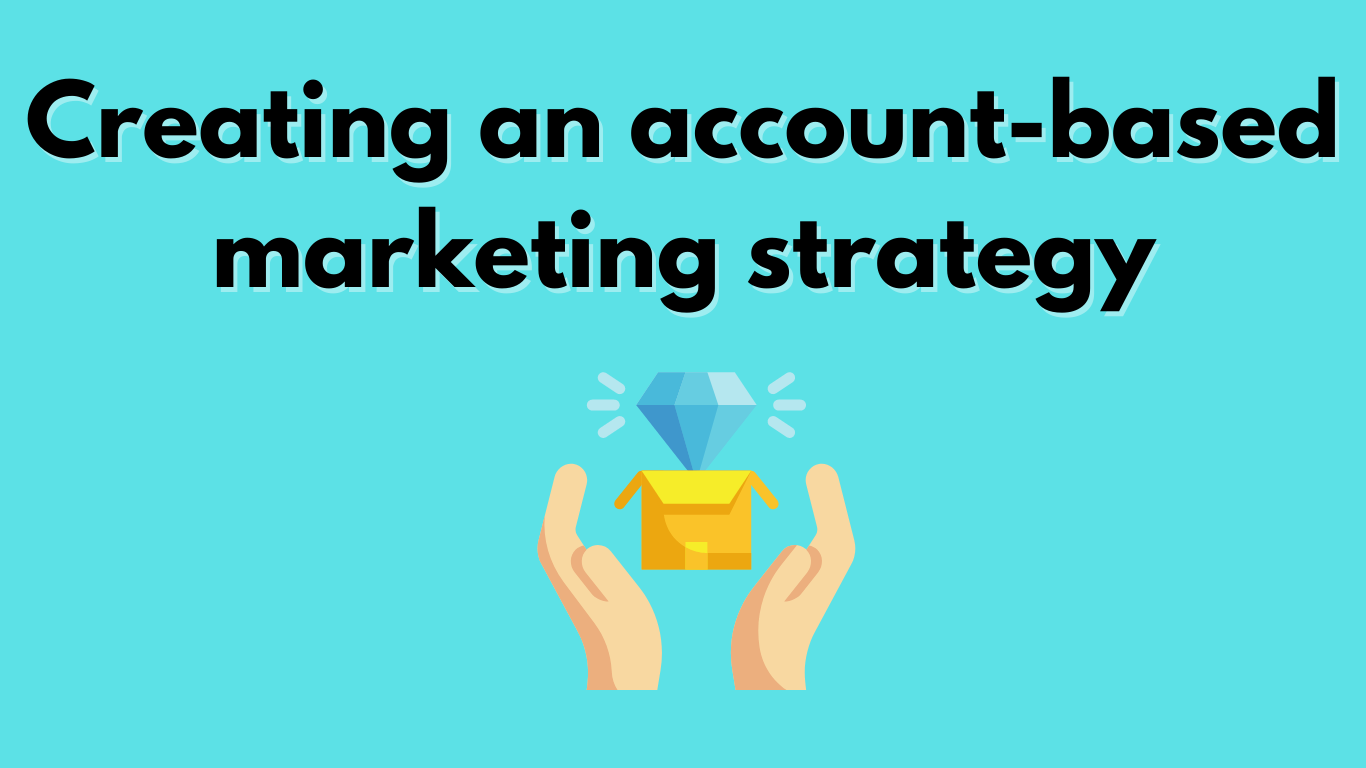Setting Up a Winning Account-Based Marketing Strategy (2026 Guide)
Account-based marketing (ABM) flips the usual B2B playbook.
Instead of chasing everyone, you focus on the few accounts that can actually move revenue. That’s one of many reasons why 67% of brands leverage account-based marketing.
It’s targeted.
It’s intentional.
It removes noise and pushes your best opportunities to the front of the line.
If you’ve heard of ABM but never actually used it, you’re not alone. Most companies don’t adopt an account-based marketing strategy until they’re tired of broad, scattershot marketing that never lands.
This guide breaks down what ABM is, why it works, and how to build a simple, repeatable ABM system that brings in bigger deals, shorter sales cycles, and true sales–marketing alignment.
What You’ll Learn:
- What account-based marketing actually is
- How ABM increases ROI and shortens sales cycles
- How to identify your most valuable accounts
- How to personalize your outreach
- How to track and measure success
Table of Contents
What Is Account-Based Marketing (ABM)?



Account-based marketing is a B2B strategy where sales and marketing work together to focus on a specific list of high-value target accounts — not broad audiences or generic customer segments.
You don’t create campaigns for everyone. ABM centers your marketing. Best of all? You’re focusing on companies who can turn your company into a money printer.
Modern ABM typically includes:
- ICP (ideal customer profile) refinement
- Account-specific content
- Multi-channel personalization
- Cross-team alignment
- Better deal sizes and faster sales cycles
An account-based marketing strategy isn’t about reaching more people. It’s about reaching the right people with the right message.
Why an Account-Based Marketing Strategy Works



1. Sales and Marketing Finally Align
Most B2B teams struggle with miscommunication.
ABM fixes that.
Both teams agree on:
- The same target accounts
- The same goals
- The same metrics
- The same definition of success
When everyone works from the same list, your pipeline becomes cleaner and easier to manage.
2. ABM Improves ROI
Personalized, targeted campaigns get more engagement and close bigger deals. In fact, 72% of marketers reported a substantial boost in customer engagement after implementing ABM.
Gartner reports that ABM programs often deliver:
- Higher win rates
- Larger contract values
- Stronger customer retention
Relevance = attention.
Attention = revenue.
3. Personalization Becomes Scalable
An account-based marketing strategy lets you tailor messaging for each major account without overwhelming your team. You don’t need 50 custom campaigns — you need 5–10 strategic variations you can reuse across similar accounts.
4. ABM Eliminates Wasted Effort
When you focus on 20–50 revenue-driving accounts instead of hundreds of low-intent leads, your team spends more time on the work that actually moves deals forward.
And that can make a big difference.
Think about it like having friends. Would you rather have 50 acquaintances or 5 people you’re super close with?
How to Create a Winning Account-Based Marketing Strategy



1. Build Your ABM Team
Your ABM team should include your strongest players from:
- Sales
- Marketing
- RevOps (if applicable)
- Customer success (optional but helpful)
Small companies may include everyone.
Larger companies should form a “tiger team” of top performers who understand your ICP and best accounts.
From my experience working for skeleton crews where each person basically owns an entire department to large corporations where new people seem to be showing in Teams chats and Zoom meetings each week, building a tiger team will take a bit more time and effort.
2. Identify Your Target Accounts
An important factor of any account-based marketing strategy is delivering consistent experiences.
This step makes or breaks your ABM program.
Look at:
- Revenue potential
- ICP fit
- Buying intent signals
- Engagement history
- Opportunity stage
- Company stability
- Tech stack and use cases
You want accounts with both strong intent and strong fit.
3. Map Decision-Makers and Buying Committees
Most B2B deals involve 6–10 stakeholders. Before you reach them, companies utilizing account-based marketing strategies know you’ve got to find them first.
ABM only works when you map:
- Who influences the purchase
- Who approves the purchase
- Who uses the product
- Who blocks decisions
Create separate messaging for each role.
4. Personalize the Buyer Journey
This isn’t creepy personalization — it’s clarity. You’re not hiding in the bushes. You’re not fogging up a company’s windows trying to peek in to see what everyone’s up to. Please don’t do that. Ever.
Examples of this type of personalization:
- Industry-specific landing pages
- Personalized email angles
- Messaging tied directly to pain points
- Role-specific value propositions
- Company-specific nurture sequences
This is where a great account-based marketing strategy shines:
You’re speaking to them, not “everyone.”
5. Launch Multi-Channel ABM Campaigns
The best ABM programs show up in the same places your target accounts already spend time.
Effective ABM channels include:
- LinkedIn outreach
- Retargeting ads
- Industry-specific landing pages
- Email campaigns
- Webinars
- Direct mail
- Social selling
- Executive roundtables or VIP events
- Personalized sales videos
Use 3–5 channels per account for maximum touchpoint consistency.
6. Track and Measure Your ABM Performance
The right KPIs depend on your goals, but the most common include:
- Account engagement score
- Deal velocity
- Opportunities created per account
- Meetings booked
- Revenue per target account
- Customer lifetime value
- Number of multi-threaded stakeholders
Your team should meet weekly to review performance, optimize messaging, and adjust the target account list.
Effective ABM Tactics to Try



Host Small, High-Value Events
Roundtables, dinners, workshops, or on-site sessions can make key accounts feel valued and accelerate relationship building.
Use Retargeting Ads
Retargeting keeps your brand in front of high-value stakeholders across platforms — a must for ABM visibility.
Invite Decision-Makers to Webinars
Short (30–45 minute) webinars tailored to a specific pain point convert extremely well for ABM.
Use LinkedIn Company Targeting
Track and target specific companies and their decision-makers through LinkedIn’s built-in ABM features.
Personalize Every Message
Adding a decision-maker’s name, role, industry, or company context massively increases engagement.
Send Direct Mail
Direct mail is underrated in B2B.
Packages, letters, or whitepapers can break through digital noise.
Account-based marketing helps you stop trying to talk to everybody at once. Instead, you focus on the few companies that actually matter — the ones that move your numbers. It’s no wonder that ABM market size projected to reach $3.8 billion by 2030.
And when sales and marketing finally work from the same list? Everything feels lighter. Deals move quicker. Conversations feel real. The whole process stops being a chaotic guessing game.
If you want a more intentional way to grow in B2B — something cleaner, sharper, and way less stressful — ABM is honestly one of the best places to start.



Alex Eagleton is a copywriter and digital marketer with a decade of experience helping companies connect with their audiences. He’s written for brands such as Microsoft, Roku, and Ramsey Solutions, and specializes in creating content that not only informs but drives measurable results. Known for his versatility, Alex adapts seamlessly to different voices and tones, making him a trusted partner for businesses looking to grow through content.
When he’s not writing, he enjoys spending time with his dogs, reading, and playing guitar.
You can reach him by emailing alex@contentmarketinglife.com.







